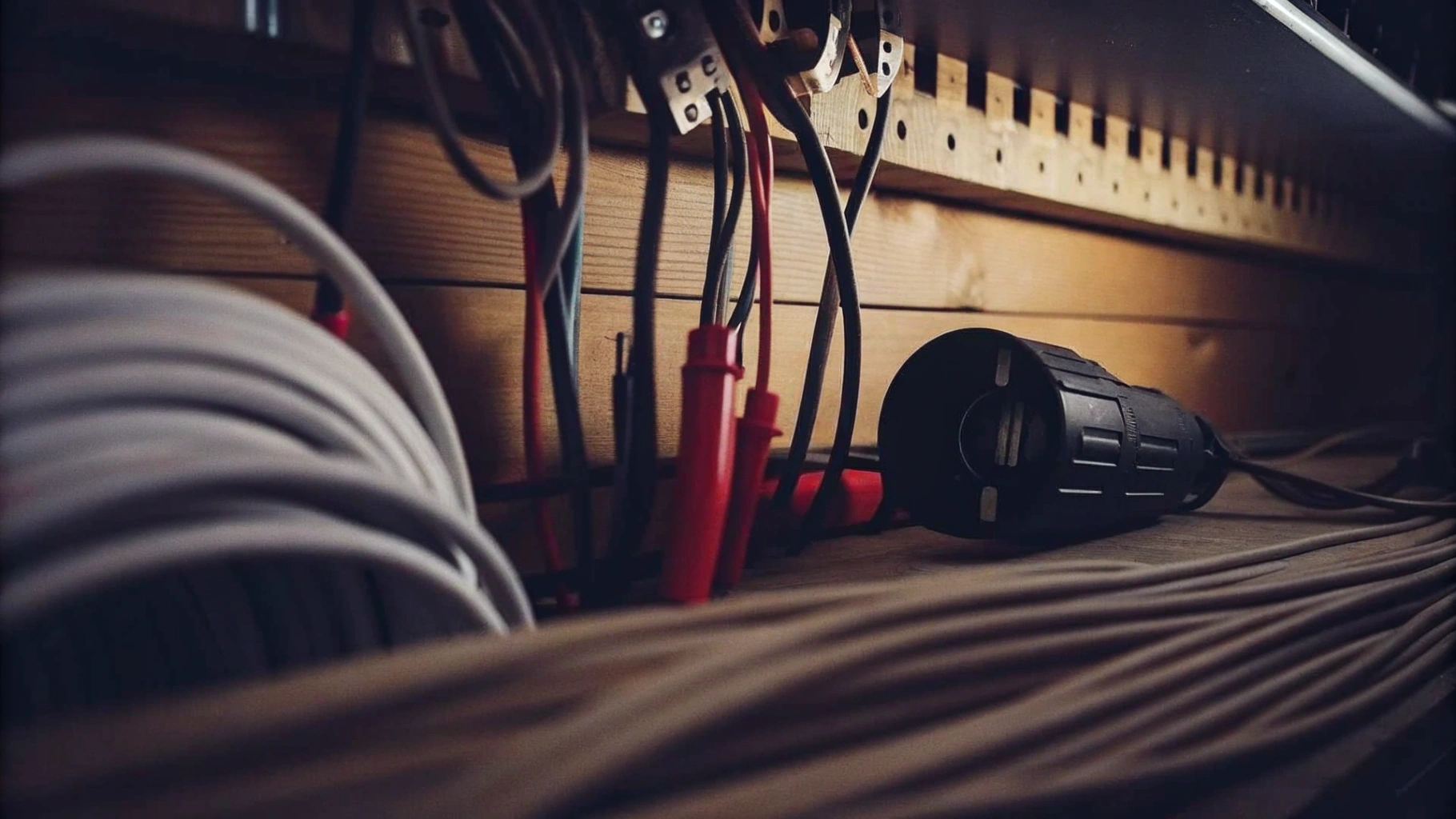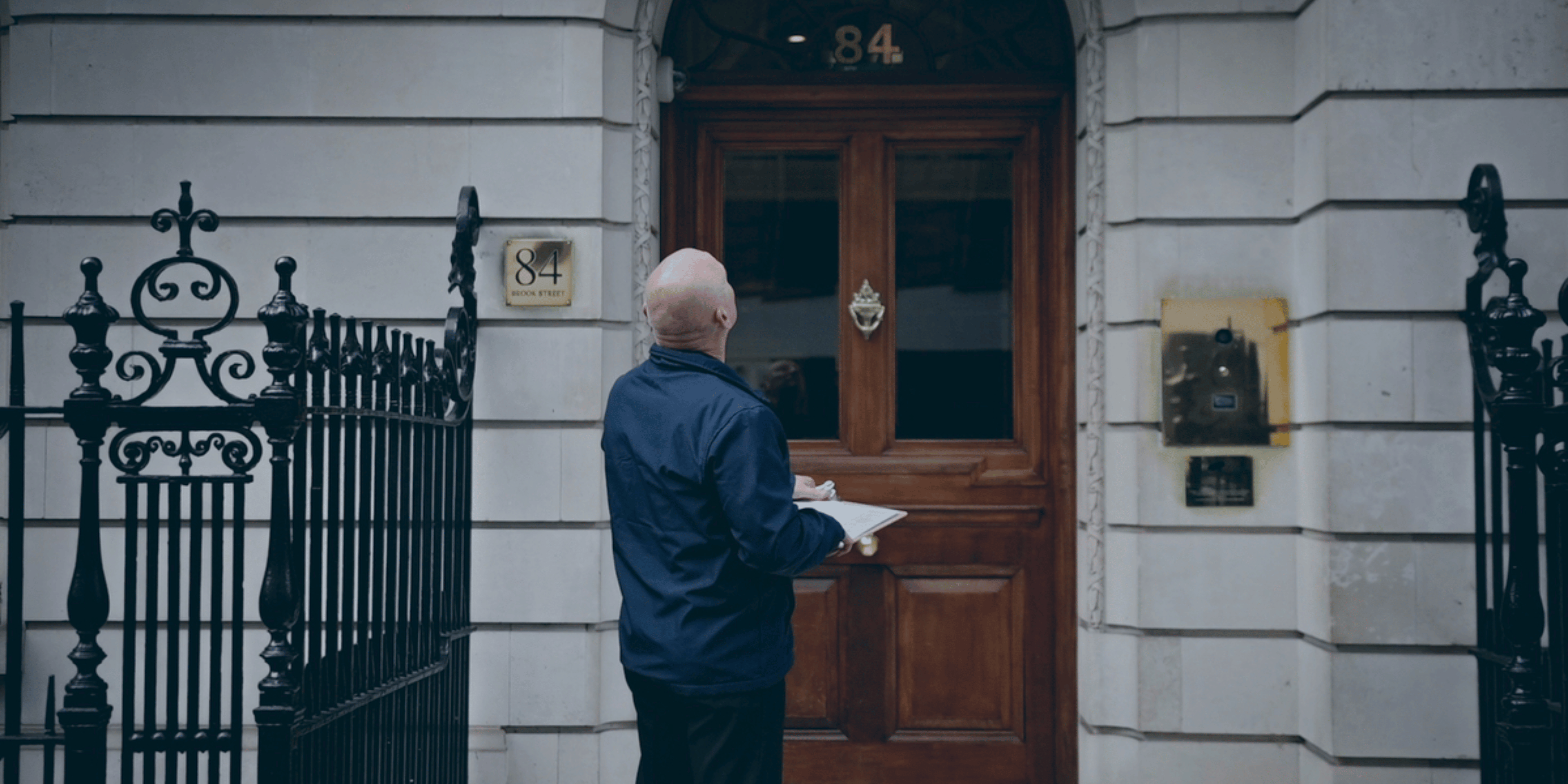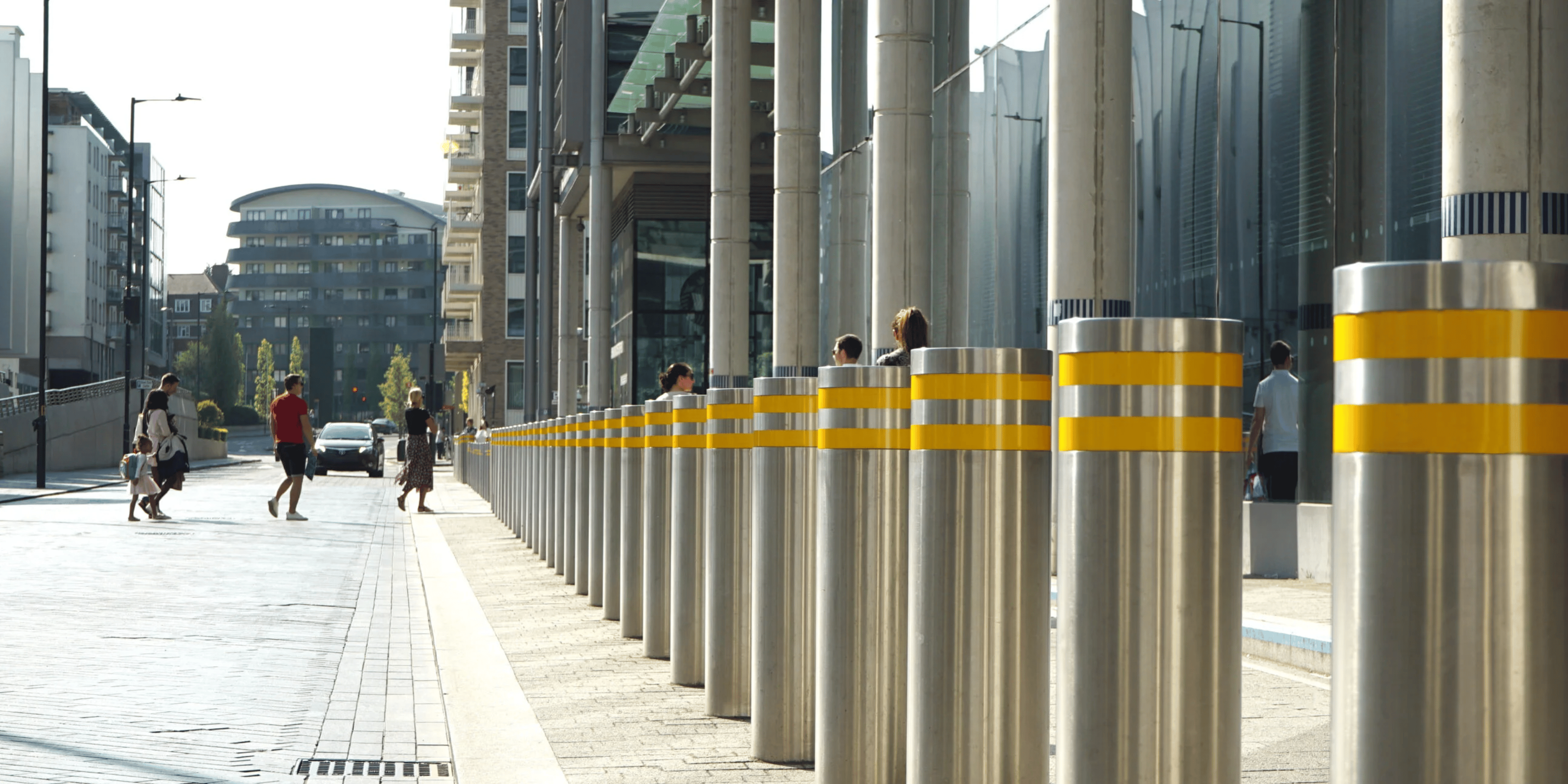
Master Commercial CCTV Camera Installation in 4 Simple Steps

Overview
The article presents a critical observation: effective security management is often underestimated in business operations. It outlines four essential steps for mastering commercial CCTV camera installation:
- Planning
- Executing
- Testing
- Maintaining the system
By emphasising thorough planning, careful execution, rigorous testing for optimal performance, and ongoing maintenance strategies, the article interprets the significance of these steps for businesses. Ignoring these aspects can lead to substantial financial, operational, and reputational risks. Therefore, the article serves as a comprehensive guide to ensure effective surveillance tailored to specific security needs, positioning Priority First as a pragmatic solution for enhancing business resilience.
Introduction
Navigating the complexities of commercial CCTV camera installation is a significant challenge for many businesses. This reality underscores the critical importance of safeguarding assets and enhancing security. The installation process can be broken down into four straightforward steps:
- Planning
- Executing
- Testing
- Maintaining a robust surveillance system
However, numerous factors must be considered—from camera types to compliance with legal regulations. Ignoring these complexities can lead to financial, operational, or reputational risks. Therefore, ensuring a seamless installation that meets specific security needs is essential for long-term business resilience.
Plan Your CCTV Installation: Key Considerations
Before embarking on the commercial CCTV camera installation process, thorough planning is paramount. Assessing your security needs is the first step in commercial CCTV camera installation: identify areas requiring surveillance, particularly high-risk zones such as entrances, exits, and vulnerable spots. Tailored security solutions, such as commercial CCTV camera installation, ensure that specific needs are met through comprehensive assessments.
Next, determine the appropriate camera types for commercial CCTV camera installation. Choose between fixed, PTZ (pan-tilt-zoom), or dome cameras based on your specific requirements. Each type of commercial CCTV camera installation offers distinct advantages depending on the area being monitored, and Priority First can assist in selecting the most effective options for your site.
Evaluating the site layout is crucial. This involves understanding lighting conditions, potential obstructions, and the distance between cameras and monitored areas. Our team excels in conducting thorough building evaluations and risk analyses to enhance your commercial CCTV camera installation.
Select suitable recording and storage solutions. Choose the type of recording device (DVR or NVR) and the necessary storage capacity based on the number of cameras and desired retention period. This organisation with existing systems, ensuring seamless functionality and enhanced safety.
Lastly, ensure compliance with local laws and regulations regarding surveillance, including privacy considerations, when conducting commercial CCTV camera installation. Priority First’s management and consulting services can effectively guide you through the requirements for commercial CCTV camera installation.
By addressing these considerations, you can formulate a comprehensive plan that aligns with your protection objectives, leveraging Priority First's expertise to enhance operational efficiency and safeguard your assets.

Execute the Installation: Step-by-Step Process
Once a solid plan is established, executing the installation becomes imperative. Follow these steps:
- Gather Necessary Tools and Equipment: Ensure you possess all required tools, including drills, cable strippers, crimping tools, fish tape, and the cameras themselves. Essential equipment also encompasses connectors, power supplies, and cable testers to verify connexions.
- Instal Mounting Brackets: Securely attach mounting brackets at the predetermined camera locations. It is crucial to ensure they are level and positioned for optimal coverage, ideally at least 10 feet high to mitigate tampering risks.
- Run Cables: Carefully run the from the cameras to the recording device. Employ cable conduits to protect the cables from damage and ensure a tidy installation. For wired cameras, consider utilising Power over Ethernet (PoE) to streamline the process.
- Connect Cameras to Power and Network: Connect each camera to its power source and network (if applicable). It is essential to ensure all connexions are secure to prevent any interruptions. For IP cameras, an NVR is recommended to enhance performance.
- Configure the System: Access the camera settings through the provided software or app. Adjust settings such as resolution, frame rate, and motion detection according to your safety requirements. Leverage features like radar-powered motion detection to bolster monitoring capabilities.
Adhering to these steps guarantees a professional installation of commercial CCTV camera installation that fulfils your safety needs.

Test and Validate Your CCTV System: Ensuring Optimal Performance
To ensure your CCTV system operates at peak performance, thorough testing and validation are essential. Start by assessing each camera's field of view to confirm that all critical areas are monitored without any blind spots. Proper camera positioning can significantly enhance safety; research indicates a 37% decrease in crime in parking areas equipped with CCTV. Priority First's customised protection solutions guarantee extensive coverage in construction settings.
Next, evaluate the video quality for clarity, colour accuracy, and frame rate consistency. High-quality footage is crucial for effective monitoring and incident documentation, particularly in high-stakes environments like luxury hotel construction.
Verify that the is operational. Test playback to ensure footage is being recorded and stored correctly. A reliable recording mechanism is essential for analysing incidents and maintaining safety integrity, which the company emphasises in its logistics management services.
If your setup includes remote access capabilities, test these features to ensure you can view live feeds and recorded footage from your devices. This adaptability allows for real-time observation, especially advantageous in dynamic environments such as construction sites, where Priority First integrates its services with current protective measures.
Conduct a safety exercise to simulate a safety incident and assess the network's response. This exercise can reveal potential vulnerabilities in your setup and assist in refining your protection protocols.
By diligently testing your CCTV setup, you can confirm its effectiveness and ensure it provides the robust security necessary for your construction site. Moreover, research shows that drug-related offences dropped by 20% in regions equipped with CCTV, underscoring the importance of verifying these systems. The systematic review by Piza et al. (2019) highlights strong evidence for the impact of CCTV on crime prevention, reinforcing the necessity for thorough testing and validation.
Maintain and Monitor: Strategies for Long-Term Success
To maintain the effectiveness of your CCTV system over time, it is essential to implement .
Firstly, consider the fact that regular inspections are crucial. Schedule routine checks at least once a year to identify physical damage, dirt, or obstructions that may hinder performance. Regular maintenance audits can preemptively reveal worn parts or potential issues, ensuring uninterrupted surveillance coverage. With Priority First's advanced monitoring solutions, including features like night vision and motion detection, you can rely on our team to assist in these inspections, guaranteeing your setup operates at peak efficiency.
Next, keeping your device's software and firmware up to date is vital. Frequent updates protect against vulnerabilities and enhance functionality. This practice is essential for addressing security threats and improving performance, ultimately extending the lifespan of your CCTV equipment. Priority First provides ongoing technical assistance and regular updates to ensure your setup remains secure and efficient.
Additionally, periodically reviewing recorded footage is important. This assessment helps confirm that your system captures the necessary data and identifies any potential issues. Such practices not only facilitate incident response but also preserve the quality of the footage, crucial for effective management. Our 24/7 monitoring service allows for real-time analysis, ensuring that any suspicious activity is promptly addressed.
Testing backup solutions is also critical. Ensure that your backup power and storage systems are functioning correctly to prevent data loss during outages. A reliable backup power source is essential to avoid potential surveillance disruptions, thus protecting your investment in safety. Priority First's integration features ensure that your backup solutions work seamlessly with your existing security configuration.
Lastly, training staff on the effective use of the platform is paramount. Providing personnel with the necessary training on accessing footage and responding to alerts ensures they can swiftly tackle minor issues and maximize the use of the CCTV equipment. Priority First offers tailored training sessions to empower your team in utilizing the CCTV system to its fullest potential.
Adhering to these strategies allows you to maintain a robust CCTV setup that continues to deliver safety and reassurance, ultimately contributing to a more secure construction environment. In the UK, with 87 crime reports per 1,000 people, the importance of effective CCTV maintenance cannot be overstated, as it can reduce crime rates by up to 25% in areas where installed. Furthermore, compliance with regulations such as GDPR is essential to avoid penalties, making regular maintenance not just a best practice but a legal necessity.

Conclusion
Effective commercial CCTV camera installation stands as a pivotal measure in fortifying security and protecting assets. By thoroughly planning, executing, testing, and maintaining the CCTV system, businesses can establish a resilient surveillance framework tailored to their specific requirements. This comprehensive methodology not only deters criminal activity but also guarantees a dependable monitoring solution adaptable to diverse environments.
The reality is that successful installation hinges on key considerations:
- Assessing security needs
- Selecting suitable camera types
- Adhering to local regulations
Step-by-step guidance on installation—from gathering tools to configuring the system—underscores the necessity of a meticulous approach. Furthermore, the importance of regular testing and maintenance is clear, ensuring that the CCTV system remains effective and efficient over time.
Ultimately, investing time and resources into a well-planned CCTV installation can yield substantial benefits, including decreased crime rates and improved safety. That said, prioritising ongoing maintenance and monitoring strategies allows businesses to ensure their security systems operate at peak performance, delivering peace of mind and protection against potential threats. Embracing these best practises not only enhances security but also contributes to a safer and more secure commercial environment.
Frequently Asked Questions
What is the first step in planning a commercial CCTV camera installation?
The first step is to assess your security needs by identifying areas requiring surveillance, particularly high-risk zones such as entrances, exits, and vulnerable spots.
What types of cameras can be chosen for commercial CCTV camera installation?
You can choose between fixed cameras, PTZ (pan-tilt-zoom) cameras, or dome cameras, depending on your specific requirements.
Why is evaluating the site layout important for CCTV installation?
Evaluating the site layout is crucial to understand lighting conditions, potential obstructions, and the distance between cameras and monitored areas, which helps in effective monitoring.
What should be considered when selecting recording and storage solutions for CCTV?
You should choose the type of recording device (DVR or NVR) and determine the necessary storage capacity based on the number of cameras and the desired retention period.
How can Priority First assist in the CCTV installation process?
Priority First can assist by providing tailored security solutions, conducting thorough building evaluations and risk analyses, and guiding you through compliance with local laws and regulations regarding surveillance.
What are the key considerations for ensuring compliance during CCTV installation?
Key considerations include understanding local laws and regulations regarding surveillance, as well as addressing privacy considerations during the installation process.




